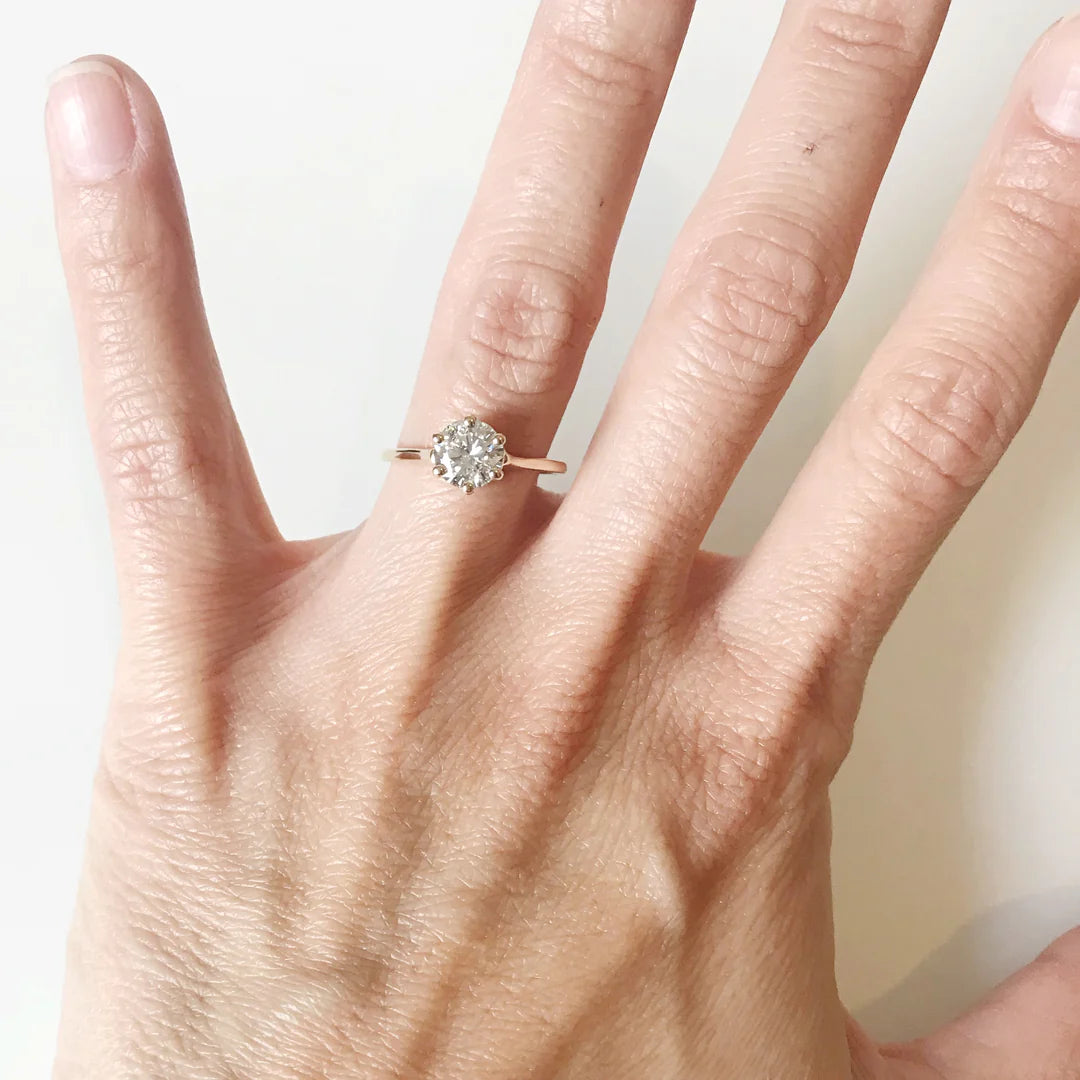
Everything you need to know about engagement rings
For PAAR the emotions, stories and moments that are captured in jewellery are what represent the real value of our pieces. "The only thing that differentiates a gold earring from a ring is the meaning we give it," explains Paulina Villalpando, founder of PAAR. For this reason, we seek to create special engagement rings, always custom made and well thought, designed and made by the groom/girlfriend. “Unique rings that tell the story of each couple and thus become these timeless charms that keep those emotions alive,” Paulina adds.

For this reason, as a central part of PAAR's philosophy when it comes to designing custom-made pieces of fine jewelry and, specifically, engagement rings, there is no rule to follow, it can always be adapted to any style and budget. In the United States, and it has become popular in other countries, it was customary to allocate what corresponds to two months of salary to define the cost of the engagement ring, but, in reality, the couple decides this according to what they are looking for.
But where do you begin? We break down the different points to take into account to facilitate the process of designing an eternal ring.
1. Metal
It can be made in gold, silver or platinum, depending on the taste and budget of each couple. Although, generally, in engagement rings it is customary to use gold (yellow, pink or white) and platinum. The karats is determined by the mixture of metals with fine gold and defines the softness or hardness of the gold (the softer, the more prone to wear). 14 karat gold in any shade is recommended at PAAR.

Platinum, on the other hand, is a pure metal (it does not mix with other metals, unlike gold), it does not oxidize, nor is it affected by most acids. Hence its popularity.
Another important point, and fundamental within the PAAR philosophy, is the option of using recycled gold, from pieces of family jewelry, for example, which reduces the cost and environmental impact of the piece, as well as adding a certain emotional touch to the process.
2. Gemstone
Contrary to what is thought (although increasingly demystified) there is no reason to give a diamond ring. This custom was only popularized in the 40s by a De Beers advertising campaign, "diamonds are forever", but in reality they can be used from pearls to any gem that represents or with which the couple feels identified.

When choosing a gem, what should be considered is its durability, which is defined by geologists as a gem's ability to resist wear, heat, light, household chemicals, and moisture. To assess the durability of a precious gem, experts consider three different factors: hardness, toughness, and stability.
-Hardness: resistance to scratches and abrasions.
-Toughness: resistance to breakage and chipping.
-Stability: resistance to chemicals, heat, humidity and light.
Now let's talk about diamonds. These are determined by the 4 C's: cut, clarity, carat weight and color. It is important to highlight that, in this sense, bigger is not always better, since its value is determined by a game between the 4 C's. A large diamond, but with visible inlays, has less value, for example. Most diamonds used in jewelry weigh less than one carat. These characteristics are also those that are included in the certificate of a gem, which can also sometimes include its origin (although usually not).

There is a very interesting type of diamond called "old mine cut", from mines in India, Brazil and South Africa in the 18th and 19th centuries. They have a very particular look, since they were measured by eye and cut by hand (the mechanized tool for cutting diamonds was not invented until 1870). They are said to glow best in candlelight.
On the other hand, there are also lab grown diamonds or diamonds made in the laboratory. With the same beauty and properties, they are usually cheaper and without the social burden that is often associated with mined diamonds. However, environmentally they are controversial since it is said that the amount of energy (Co2) that is used can be greater than those of the mine. They were first created in the 1950s for military purposes.

Another important thing to consider when buying diamonds is whether or not it is conflict free. If you buy it from a country that is a member of the Kimberly process, it most likely is. In 2008, Mexico adhered to the Kimberley Process Certification System as a certified member country for the commercialization of "conflict free" rough diamonds. With this, you can trade rough diamonds with the other member countries of the Kimberley Process.
3. Cut
Another important point to consider when designing a custom-made engagement ring is the cut of the stone. The brilliant cut has long been popular, but in reality, each cut allows for different designs, in order to create a piece that is all your own.

4. Design
With all these things decided, more than half of the design is already done, all that remains is to finish devising the final result, which the PAAR team does hand in hand with the boyfriend/girlfriend to end up creating that piece as personal as the history of the couple.

To make an engagement ring with us email to info@paar.mx.



